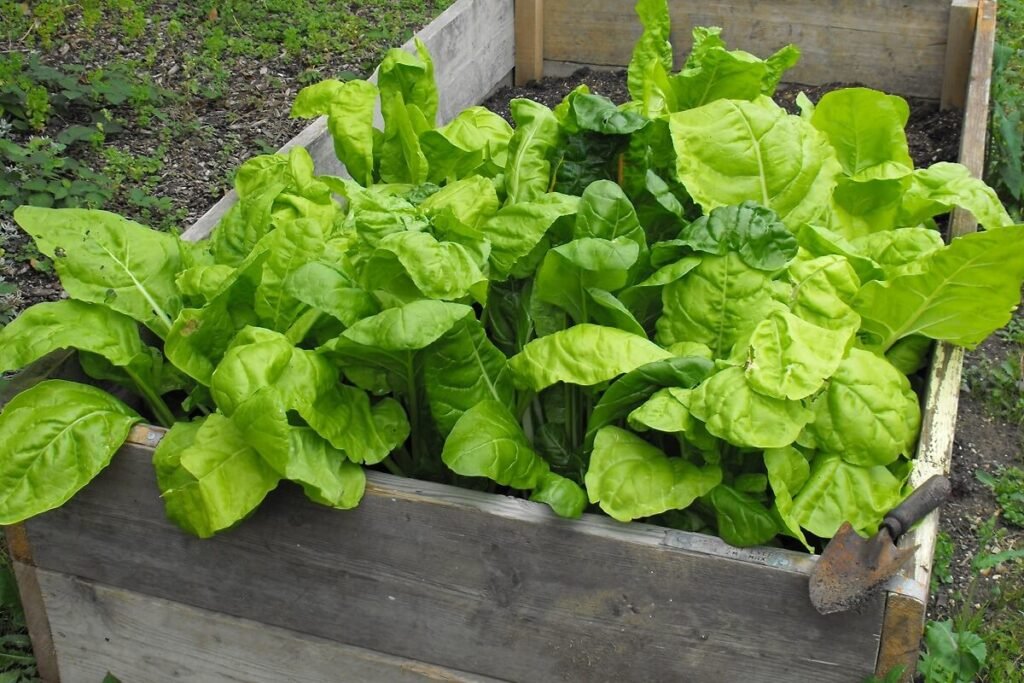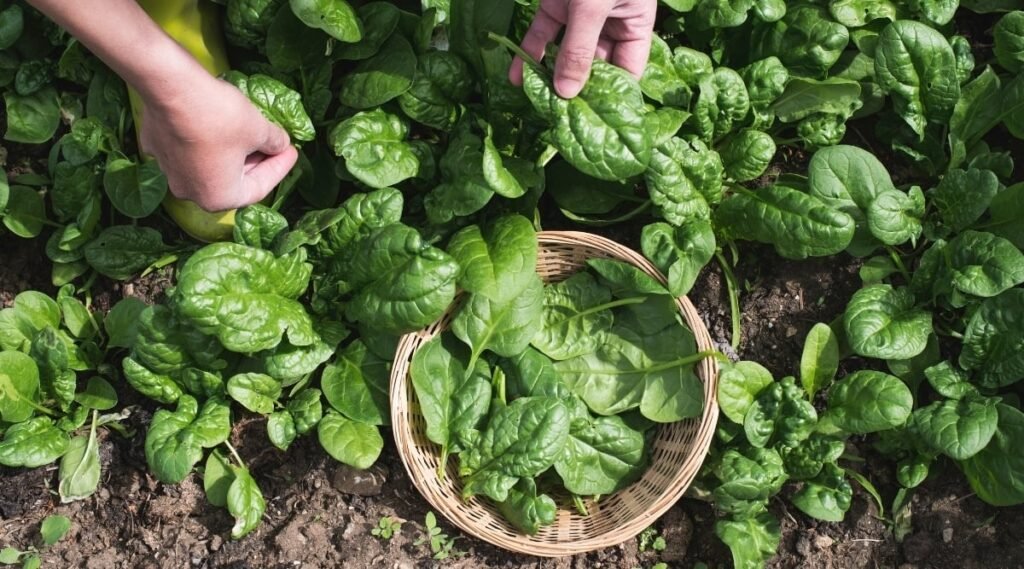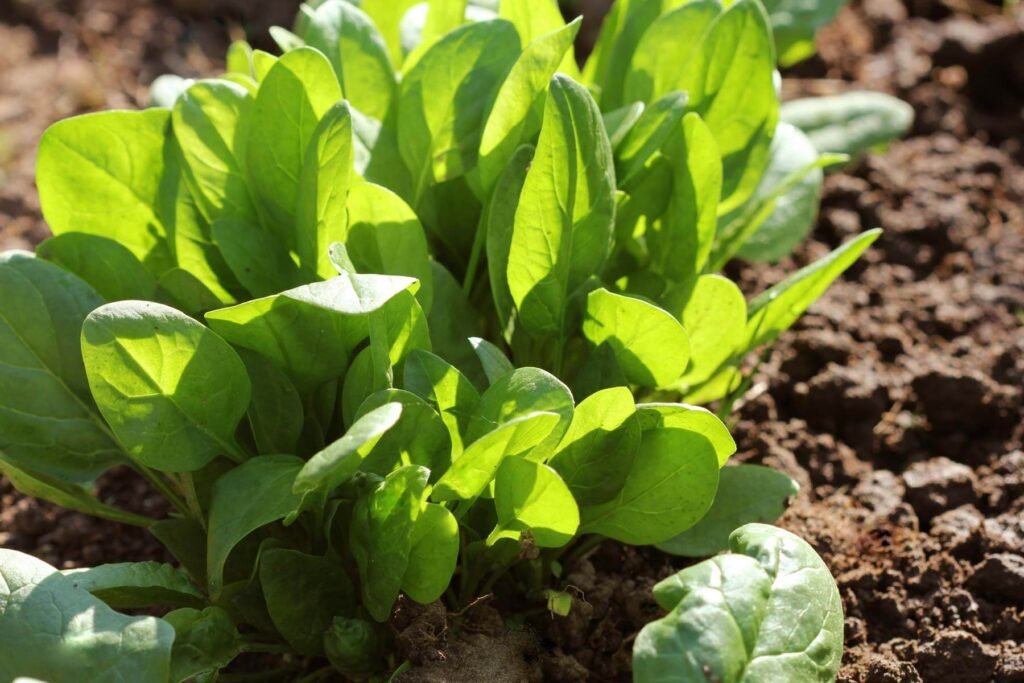Spinach is a nutrient-rich, versatile leafy green that thrives in cool weather. Packed with vitamins, minerals, and antioxidants, it’s a staple in salads, smoothies, sautés, and soups. While many gardeners grow spinach in spring or fall, with the right techniques, it can be cultivated throughout the winter. Using raised beds not only improves soil drainage and fertility but also provides a controlled environment that extends the growing season. This article explores how to grow spinach all winter long in raised beds, from soil preparation and planting to protection strategies and harvesting.
Why Raised Beds Are Ideal for Winter Spinach

Raised beds offer several advantages that make them perfect for winter spinach cultivation:
- Improved Drainage: Spinach is susceptible to root rot in wet soil. Raised beds elevate the plants above ground level, preventing waterlogging.
- Soil Warming: Raised beds absorb heat from sunlight more effectively than ground-level soil, moderating temperature fluctuations.
- Enhanced Soil Fertility: Raised beds allow gardeners to control soil composition, mixing compost, organic matter, and amendments for optimal growth.
- Ease of Protection: Covers, cold frames, and row tunnels are easier to implement on raised beds, shielding spinach from frost, snow, and harsh winds.
- Accessibility: Raised beds reduce bending and make winter maintenance, harvesting, and planting more convenient.
By leveraging these benefits, gardeners can successfully grow tender, flavorful spinach even in cold climates.
Choosing the Right Spinach Varieties for Winter

Not all spinach varieties are equally cold-hardy. For winter growing, select varieties known for their resilience to frost and slow bolting:
- Savoy Spinach: Crinkled leaves, frost-tolerant, and stores well in winter. Example: ‘Bloomsdale Long Standing.’
- Flat-Leaf Spinach: Smooth leaves, ideal for salads, moderately cold-hardy. Example: ‘Giant Winter.’
- Semi-Savoy Varieties: Offer a balance of texture, frost resistance, and ease of harvesting. Example: ‘Tyee’ or ‘Melody.’
- Baby Leaf Varieties: Fast-growing, can be harvested repeatedly, and are perfect for succession planting.
Choosing the right variety ensures consistent growth and tender leaves throughout winter.
Preparing the Raised Bed for Winter Spinach

Proper soil preparation is critical for healthy winter growth:
- Soil Composition: Spinach prefers loose, well-draining soil rich in organic matter. A mix of 2 parts garden soil, 1 part compost, and 1 part coarse sand or perlite creates optimal conditions.
- Soil pH: Slightly acidic to neutral soil (pH 6.0–7.0) supports nutrient uptake and prevents deficiencies.
- Fertility: Incorporate slow-release fertilizer or well-rotted compost to provide a steady nutrient supply. Avoid high nitrogen levels right before winter, which can encourage excessive leaf growth that is susceptible to frost damage.
- Bed Size: Raised beds at least 12–18 inches deep allow for good root development and easier maintenance.
Well-prepared soil in raised beds creates the foundation for productive winter spinach crops.
Planting Spinach for Winter Harvest

Timing and technique are crucial for extending the spinach season:
- Planting Time: Sow spinach seeds 6–8 weeks before the first expected frost. In milder climates, sow in late fall for continuous winter harvest.
- Seed Depth: Plant seeds ½ inch deep and cover lightly with soil.
- Spacing: Thin seedlings to 4–6 inches apart to allow airflow and prevent overcrowding, which can lead to disease in cool, damp conditions.
- Succession Planting: Sow new seeds every 2–3 weeks to maintain a continuous supply of fresh leaves.
- Container vs. Bed: While raised beds are ideal, winter spinach can also grow in containers if space is limited, allowing easy relocation under protection during extreme cold.
Correct planting ensures strong seedlings that establish before temperatures drop too low.
Protecting Spinach from Winter Weather
Even cold-hardy spinach benefits from protection against extreme winter conditions:
- Row Covers: Lightweight frost cloths or floating row covers trap warmth and protect leaves from frost and wind.
- Cold Frames or Mini Greenhouses: Small enclosures over the raised bed extend the growing season by several weeks and allow spinach to thrive even in subfreezing temperatures.
- Mulching: Apply straw, shredded leaves, or pine needles to insulate roots, conserve moisture, and moderate soil temperature.
- Site Selection: Place raised beds in full sun, ideally on the south-facing side of your garden to maximize light and warmth.
Using protective strategies helps spinach survive harsh winters while maintaining tenderness and flavor.
Watering and Maintenance
Winter conditions change how gardeners care for spinach:
- Moisture Management: Spinach needs consistent moisture to grow well. Raised beds dry faster than ground soil, so monitor moisture levels carefully.
- Watering Frequency: Water early in the day to allow leaves to dry before nighttime, reducing fungal disease risk. Avoid overwatering, which can lead to root rot in cold soils.
- Weed Control: Winter weeds can compete for nutrients and space. Mulch and hand-pulling keep beds clean.
- Pest Monitoring: Even in winter, slugs, snails, and occasional aphids can appear. Remove pests manually or use organic deterrents.
Consistent care ensures that spinach remains vigorous through cold months.
Fertilization During Winter

Winter spinach benefits from light, targeted feeding:
- Pre-Planting Fertilizer: Incorporate compost or balanced fertilizer to supply essential nutrients for root and leaf growth.
- Side Dressing: In mid-winter, apply a light organic fertilizer or compost tea to boost leaf production without encouraging excessive, frost-sensitive growth.
- Avoid Over-Fertilization: Excess nitrogen can produce soft leaves prone to freezing, so moderate applications are key.
Balanced feeding helps maintain healthy foliage and flavor throughout the season.
Harvesting Winter Spinach
Proper harvesting encourages continuous growth:
- Cut-and-Come-Again: Harvest outer leaves when they are 3–6 inches long, leaving the central growing point intact for regrowth.
- Timing: Morning harvests preserve maximum sweetness and minimize water loss.
- Frequency: Regular harvesting every 1–2 weeks promotes tender leaf production and prevents bolting.
- Handling: Use sharp scissors or a knife to avoid damaging plants and reducing productivity.
With correct harvesting techniques, raised bed spinach can provide fresh leaves from late fall through early spring.
Troubleshooting Common Winter Challenges
- Bolting: Rare in winter, but early-maturing varieties can bolt if exposed to unusually warm winter days. Plant slow-bolting varieties to avoid this.
- Leaf Yellowing: Often caused by nutrient deficiency. Correct with light applications of compost or organic fertilizer.
- Fungal Diseases: Cool, damp conditions can encourage downy mildew. Ensure good spacing, adequate airflow, and avoid overhead watering.
- Pest Pressure: Monitor for overwintering aphids, slugs, and snails. Protective covers help prevent infestations.
Being proactive minimizes setbacks and ensures a productive winter crop.
Advantages of Growing Spinach in Raised Beds Through Winter
- Continuous Fresh Greens: Provides nutrient-rich leaves even when outdoor gardens are dormant.
- Improved Soil Quality: Raised beds allow for easy soil enrichment and maintenance.
- Control Over Conditions: Gardeners can adjust light, moisture, and temperature more effectively than in ground-level beds.
- Reduced Pest and Disease Risk: Elevated beds help reduce pest access and improve air circulation.
Winter raised beds can become a reliable source of fresh spinach, ensuring healthy meals during the colder months.
Conclusion
Growing spinach all winter long in raised beds is an achievable and rewarding goal. By selecting cold-hardy varieties, preparing nutrient-rich soil, planting at the right time, and protecting crops from harsh winter conditions, gardeners can enjoy a steady supply of tender, flavorful greens throughout the season. Raised beds not only provide ideal drainage and soil control but also make it easier to implement protection strategies, succession planting, and efficient harvesting.
Consistent care, balanced fertilization, and attention to moisture and temperature ensure that winter spinach remains vigorous, sweet, and nutritious. With the right approach, winter gardening transforms raised beds into a reliable source of fresh greens, bringing vitality and flavor to meals even in the coldest months.
Winter spinach in raised beds proves that with thoughtful planning and practical techniques, gardeners can extend the growing season and enjoy fresh, homegrown vegetables year-round.
